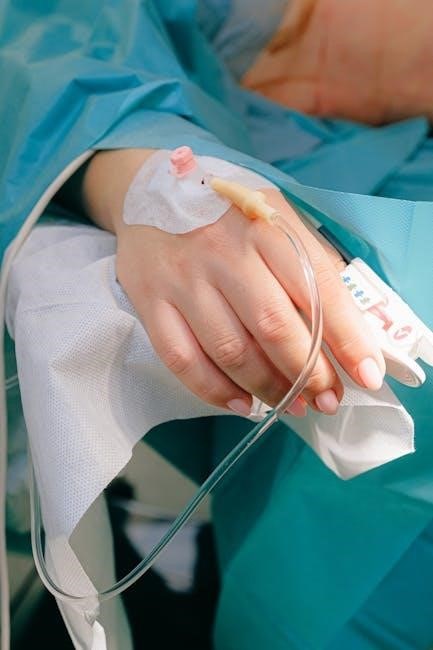Incision and drainage (I&D) is a common procedure to treat abscesses by draining pus, reducing pain, and preventing infection spread. It’s minimally invasive and performed under local anesthesia in various settings.
1.1 Definition and Purpose
Incision and drainage (I&D) is a surgical procedure involving cutting into an abscess to drain pus, relieving pain and pressure. Its purpose is to eliminate infection, promote healing, and prevent complications by removing infected material. This treatment is essential for abscesses unresponsive to antibiotics, ensuring proper wound care and recovery.
1.2 Overview of the Procedure
The I&D procedure involves numbing the area with local anesthesia, making a small incision to drain pus, and cleaning the abscess cavity. Sometimes, a drain or gauze packing is inserted to facilitate healing. The process is typically quick, done in a clinical setting, and minimally invasive, promoting effective wound management and reducing infection risk.
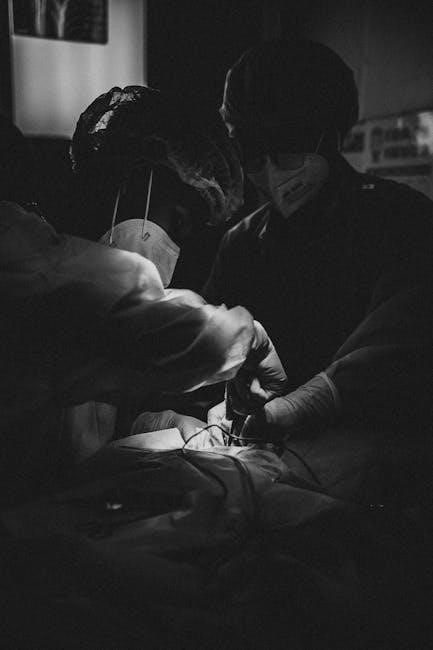
Indications for Incision and Drainage
Incision and drainage is necessary for abscesses that do not resolve with antibiotics, causing severe symptoms or complications, and to prevent infection spread and promote healing.
2.1 When is I&D Necessary?
I&D is necessary for abscesses that fail to improve with antibiotics, are large or symptomatic, or cause systemic symptoms. It’s indicated when there’s significant pain, swelling, or risk of infection spread, requiring prompt intervention to drain pus and promote healing.
2.2 Types of Abscesses Requiring I&D
Abscesses requiring I&D include soft tissue, cutaneous, and deeper abscesses like perianal or intra-abdominal. They may be simple or complex, with loculations or sequestra. Large or symptomatic abscesses, especially those causing pain or systemic symptoms, necessitate drainage to prevent complications and promote healing.
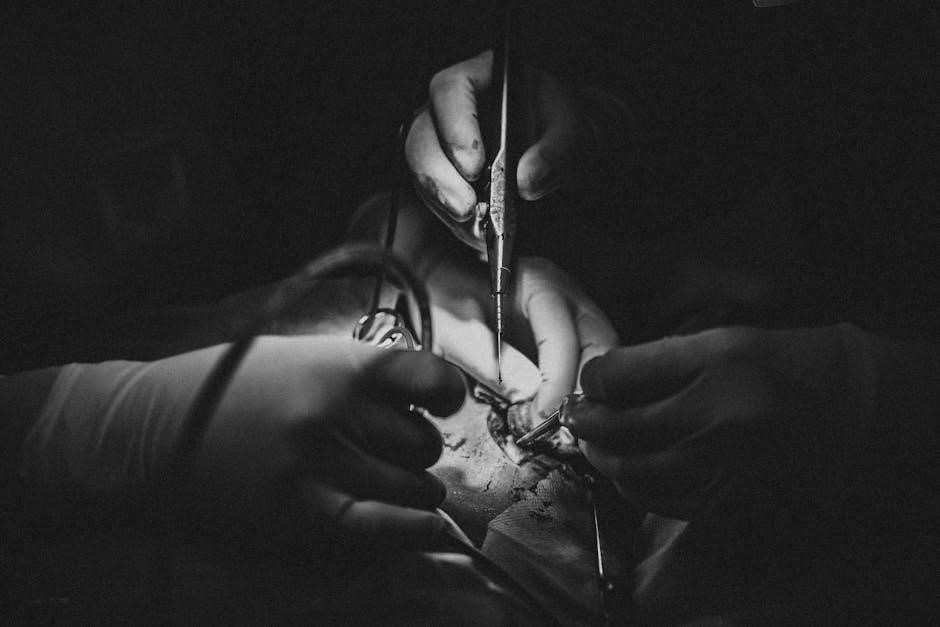
Preparation for the Procedure
Preparation involves verifying patient identity, explaining the procedure, positioning the patient, sterilizing the site, and administering local anesthesia. Materials like scalpels, forceps, and drainage supplies are readied.
3.1 Patient Verification and Explanation
Patient verification ensures the correct individual undergoes the procedure. Detailed explanation of the I&D process, including risks and benefits, is provided to obtain informed consent, addressing any patient concerns and ensuring understanding of the treatment plan and expected outcomes. This step is crucial for patient safety and legal compliance, fostering trust between patient and provider.
3.2 Materials and Equipment Required
- Sterile gloves and gowns for the healthcare provider.
- Antiseptic solution for skin preparation.
- Scalpel or sharp instrument for incision.
- Forceps or hemostat for exploring the abscess cavity.
- Drainage materials (e.g., Penrose drain or gauze).
- Local anesthesia (e.g., lidocaine with epinephrine).
- Sterile drapes and gown for maintaining asepsis.
- Suture material for wound closure if needed.
3.3 Local Anesthesia and Patient Positioning
Local anesthesia, such as lidocaine with epinephrine, is administered to numb the area, minimizing pain. The patient is positioned to maximize access to the abscess site. The area is prepped with antiseptic solution after anesthesia administration to maintain sterility. Proper positioning ensures comfort and facilitates effective drainage, while minimizing complications during the procedure.
3.4 Sterile Field Preparation
A sterile field is prepared using antiseptic solutions and drapes to minimize infection risk. The area is cleaned thoroughly, and sterile gloves, gowns, and instruments are used. This ensures asepsis during the procedure, reducing the chance of contamination and promoting a safe environment for incision and drainage, although the procedure itself is not fully sterile due to pus presence.

Step-by-Step Incision and Drainage Technique
The procedure involves making an incision over the abscess, exploring the cavity with hemostats, draining pus, and breaking up loculations to ensure complete drainage before dressing the wound.
4.1 Identifying the Site of Abscess
Identify the abscess site by palpating for maximal fluctuance, tenderness, and swelling. Visual inspection may reveal erythema or a visible collection. Use sterile preparation and local anesthesia before proceeding. Advanced imaging, like ultrasound, may assist in complex cases. Mark the site carefully to ensure proper alignment and effective drainage, promoting optimal healing outcomes.
4.2 Making the Incision
Making the incision involves using a scalpel to create a small, strategic cut along the skin’s natural lines. The incision should be large enough to allow proper drainage but not excessively large. A #11 or #15 blade is typically used. You may feel resistance as the scalpel penetrates the abscess wall. Use hemostats to explore and break up loculations, ensuring complete drainage.
4.3 Draining the Abscess
Drainage involves expressing purulent material from the abscess cavity. Use gloved fingers or gauze to assist in evacuating pus. A curved hemostat can help break up loculations. Thorough drainage is essential to prevent recurrence. Irrigation with saline may be performed to remove residual pus. Ensure complete evacuation to promote healing and reduce the risk of complications.
4.4 Insertion of a Drain or Packing
After draining the abscess, a drain or gauze packing is inserted to maintain wound patency and promote healing. A drain allows continuous drainage, while packing with gauze absorbs residual pus. The drain or packing is secured with sutures or tape to prevent dislodgment. This step helps reduce the risk of recurrence and promotes a clean environment for healing.
4.5 Securing the Drain
The drain is secured with sutures or tape to prevent dislodgment. This ensures proper drainage and promotes healing. Securing the drain also minimizes the risk of complications, such as infection or re-accumulation of pus, and maintains the integrity of the wound environment for optimal recovery.
Post-Procedure Care and Management
Proper wound care, dressing changes, and patient education are crucial for healing. Monitor for signs of infection and ensure follow-up appointments to assess recovery progress and remove drains.
5.1 Wound Dressing and Packing
After the procedure, the wound is dressed with sterile gauze to promote healing. Packing with saline-soaked gauze may be used to absorb pus and prevent infection. Regular dressing changes are essential to maintain a clean environment, reduce bacterial growth, and ensure proper drainage, fostering optimal wound healing and minimizing complications.
5.2 Patient Instructions for Home Care
Patients should keep the wound clean, using saline solution for dressing changes. Apply warm compresses 3-4 times daily to promote drainage. Avoid tight clothing and keep the area dry. Monitor for signs of infection, such as increased redness or pain, and follow up with a healthcare provider if symptoms persist or worsen.
5.3 Follow-Up and Wound Healing
Regular follow-ups are essential to monitor wound healing progress. Patients should return for dressing changes and removal of drains. Signs of infection, such as redness or swelling, should be reported promptly. Complete healing may take several weeks, with proper care and adherence to medical advice ensuring optimal recovery and minimizing complications.
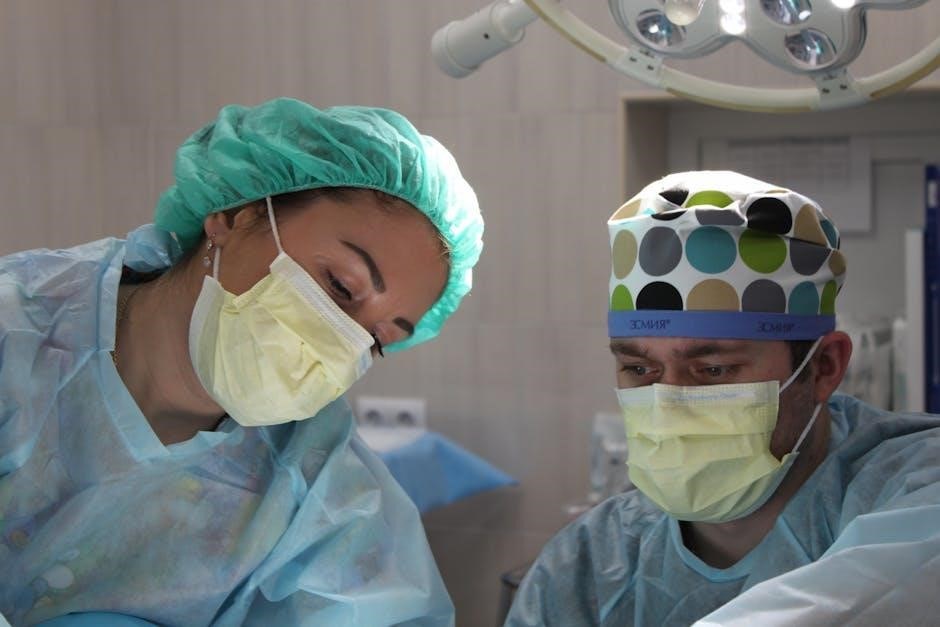
Potential Complications and Risks
Potential complications include infection spread, re-abscess formation, or systemic issues. Proper technique is critical to minimize risks and ensure successful outcomes.
6.1 Common Complications
Common complications of I&D include bleeding, infection, scarring, and nerve damage. Incomplete drainage or improper technique may lead to re-abscess formation. Allergic reactions to anesthesia or dressings can also occur. Proper post-procedure care is essential to minimize these risks and ensure proper healing.
6.2 Signs of Infection or Re-Abscess Formation
Signs of infection after I&D include redness, swelling, warmth, or increased pain at the site. Pus or fluid discharge, fever, or chills may indicate infection. Re-abscess formation can cause renewed swelling, tenderness, or fluctuance. Increased red streaks on the skin or worsening symptoms require immediate medical evaluation to prevent complications.

When to Seek Immediate Medical Attention
Seek immediate care if you experience severe swelling, spreading redness, high fever, or increasing pain. Difficulty moving the affected area or worsening symptoms post-procedure require urgent evaluation.
7.1 Emergency Situations Post-Procedure
Seek immediate medical attention if you experience severe swelling, spreading redness, high fever, or worsening pain. Difficulty breathing, rapid heartbeat, or signs of infection spreading warrant urgent care. Symptoms like chills, foul-smelling drainage, or inability to move the affected area require prompt evaluation to prevent serious complications.
7.2 Symptoms Indicating Infection Spread
Monitor for signs of infection spread, such as increased redness, swelling, or warmth around the wound. Fever, chills, or foul-smelling drainage may indicate infection. Severe pain, red streaks, or swelling that spreads beyond the affected area requires immediate medical evaluation to prevent further complications.
Materials Required for I&D
Essential materials include a scalpel, forceps, gauze, drainage catheters, antiseptic solutions, and sterile gloves. Additional items like local anesthesia and surgical drapes may also be needed.
8.1 Surgical Instruments
The primary surgical tools for I&D include a scalpel with a No. 11 or 15 blade, curved hemostats for probing, and forceps for tissue handling. Additional instruments like dissecting scissors and drainage catheters may be used based on abscess complexity and location to ensure effective pus drainage and wound exploration.
8.2 Drainage and Dressing Supplies
Essential supplies include sterile gauze for packing, drainage catheters, and absorbent dressings to manage pus and promote healing. Antiseptic solutions and gloves are used to maintain sterility, while adhesive tape secures dressings. These materials facilitate proper wound care, ensuring the abscess drains effectively and reduces the risk of infection or further complications.
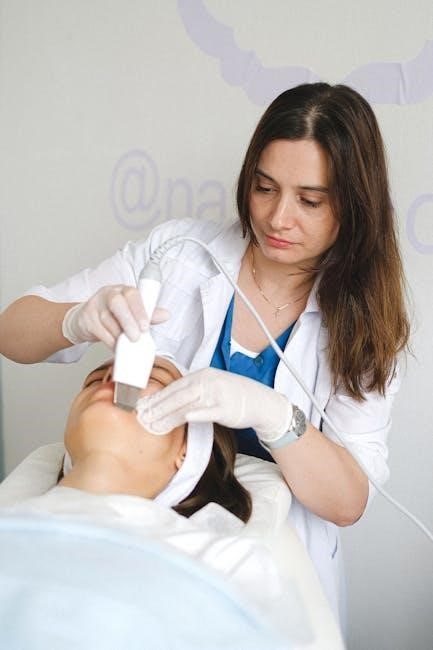
Simple vs. Complicated I&D
Simple I&D involves minor procedures for small abscesses, while complicated cases require extensive interventions, like drain insertion or gauze packing, for larger, complex infections.
9.1 Differences in Procedure Complexity
Simple I&D involves a small incision and drainage of pus, typically for superficial abscesses, while complicated I&D requires deeper dissection, drain insertion, or gauze packing for larger, complex, or loculated abscesses, often needing more time and resources.
9.2 Indications for Each Type
Simple I&D is indicated for small, localized abscesses with minimal complexity, while complicated I&D is reserved for larger abscesses, those with loculations, or deep-seated infections requiring more extensive drainage and management, often necessitating specialized tools and techniques to ensure complete resolution.
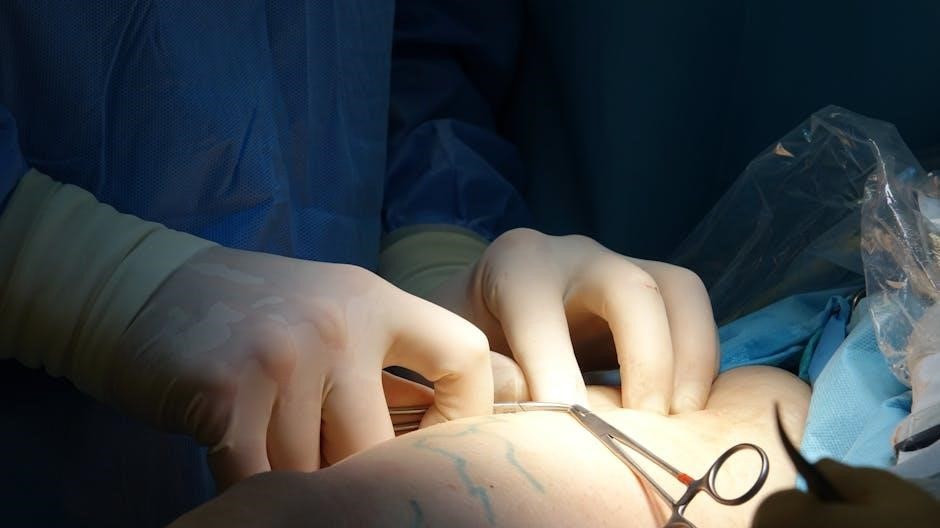
Role of Antibiotics in I&D
Antibiotics are typically prescribed after I&D to prevent infection spread, though they may be unnecessary if drainage is adequate and the abscess is fully resolved.
10.1 When Are Antibiotics Necessary?
Antibiotics are necessary when the abscess is severe, recurrent, or in sensitive areas. They are also prescribed if there’s surrounding cellulitis or systemic signs of infection, ensuring comprehensive treatment and preventing complications. Use is case-specific, determined by the physician based on patient condition and abscess characteristics.
10.2 Antibiotic Use Post-Procedure
Antibiotics are often prescribed after an I&D procedure to prevent infection spread and promote healing. They are typically continued for a short period, tailored to the patient’s condition. Antibiotic use targets residual bacteria, reducing the risk of complications and ensuring proper wound recovery, as determined by the treating physician.
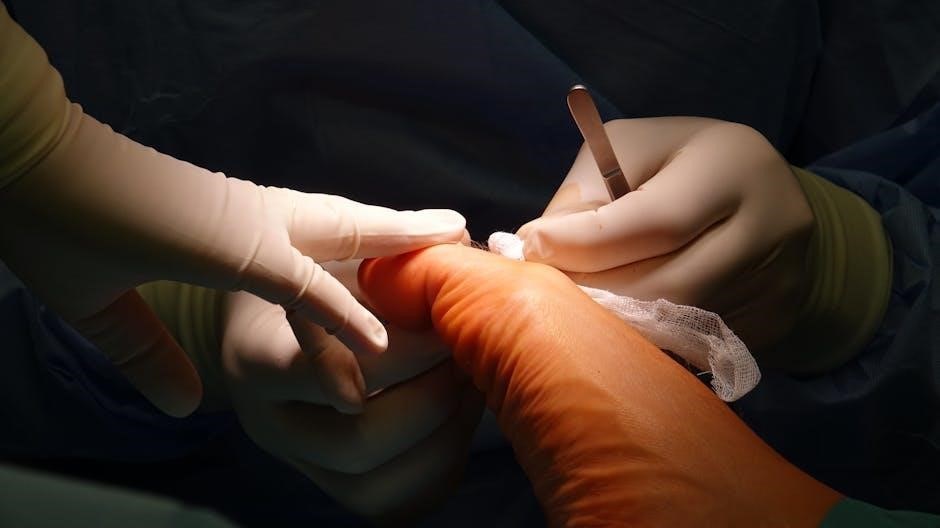
Follow-Up Care and Wound Healing
Regular follow-up appointments ensure proper wound healing and prevent complications. Monitoring the wound’s progress helps assess recovery and address any issues promptly.
11.1 Importance of Follow-Up Appointments
Follow-up appointments are crucial for monitoring wound healing, preventing complications, and ensuring proper recovery. They allow healthcare providers to assess the progress, address any issues early, and confirm the absence of infection or re-abscess formation, ultimately ensuring a successful outcome and minimizing the risk of further complications.
11.2 Monitoring Wound Healing Progress
Monitoring wound healing progress involves regular observation of the wound’s condition, including signs of healing, infection, or complications. Proper wound care, such as keeping the site clean and using prescribed dressings, is essential. Regular follow-ups with healthcare providers ensure timely detection of any issues, promoting effective recovery and preventing re-abscess formation or infection spread.
Key Takeaways and Patient Education
Key takeaways include understanding the procedure’s purpose, benefits, and post-care. Proper wound care and follow-ups are vital for healing and preventing future abscesses. Patient education empowers recovery.
12.1 Importance of Proper Wound Care
Proper wound care is essential for preventing infection and promoting healing after an I&D procedure. Daily dressing changes, saline irrigation, and keeping the area clean reduce infection risks. Proper care also minimizes complications and supports faster recovery, ensuring the wound heals effectively and reduces the likelihood of future abscess formation.
12.2 Preventing Future Abscess Formation
Preventing future abscesses involves maintaining good hygiene, using warm compresses, and addressing underlying conditions. Antibiotics may be prescribed to prevent recurrence. Regular wound monitoring and early treatment of infections can reduce the risk of abscess formation. Consulting a healthcare provider for persistent or recurring issues is crucial for long-term prevention and health management.

